
The Majestic Pitons of Saint Lucia
Explore the awe-inspiring Pitons of Saint Lucia, where adventure meets tranquility in a stunning UNESCO World Heritage Site.
The Pitons, two towering volcanic spires, are the crown jewels of Saint Lucia. Gros Piton and Petit Piton rise dramatically from the Caribbean Sea, offering a breathtaking backdrop that is both awe-inspiring and humbling. These natural wonders are part of a UNESCO World Heritage Site, making them a must-see for any visitor to the island. Adventure seekers will find a paradise in the Pitons. Hiking trails lead to the summits of both Gros Piton and Petit Piton, providing panoramic views that are worth every step. If hiking is not your preference, the surrounding waters offer excellent opportunities for snorkeling and scuba diving, where you can explore vibrant coral reefs and an array of marine life. The Pitons are not just about physical activities; they also offer a serene escape for those looking to relax. The nearby town of Soufrière provides a charming setting with its Creole architecture, local markets, and warm hospitality. You can indulge in local cuisine, which features a blend of African, French, and Caribbean influences, adding a flavorful touch to your visit.
Local tips in Pitons
- Start your hike early in the morning to avoid the midday heat.
- Hire a local guide for your hike to ensure safety and gain insights about the area.
- Don't forget to bring plenty of water and wear sturdy hiking shoes.
- Visit the Sulphur Springs nearby for a unique mud bath experience.
- Try the local dish 'Green Fig and Saltfish' in Soufrière for an authentic culinary experience.
The Majestic Pitons of Saint Lucia
The Pitons, two towering volcanic spires, are the crown jewels of Saint Lucia. Gros Piton and Petit Piton rise dramatically from the Caribbean Sea, offering a breathtaking backdrop that is both awe-inspiring and humbling. These natural wonders are part of a UNESCO World Heritage Site, making them a must-see for any visitor to the island. Adventure seekers will find a paradise in the Pitons. Hiking trails lead to the summits of both Gros Piton and Petit Piton, providing panoramic views that are worth every step. If hiking is not your preference, the surrounding waters offer excellent opportunities for snorkeling and scuba diving, where you can explore vibrant coral reefs and an array of marine life. The Pitons are not just about physical activities; they also offer a serene escape for those looking to relax. The nearby town of Soufrière provides a charming setting with its Creole architecture, local markets, and warm hospitality. You can indulge in local cuisine, which features a blend of African, French, and Caribbean influences, adding a flavorful touch to your visit.
When is the best time to go to Pitons?
Iconic landmarks you can’t miss
Sandals Grande St. Lucian
Experience the ultimate all-inclusive luxury at Sandals Grande St. Lucian, a romantic resort that offers breathtaking views, gourmet dining, and endless activities.

Royalton Saint Lucia, An Autograph Collection All-Inclusive Resort
Discover the ultimate tropical getaway at Royalton Saint Lucia, featuring luxurious accommodations, gourmet dining options, and endless activities in a breathtaking setting.

Pointe Seraphine Cruise Port
Discover the vibrant Pointe Seraphine Cruise Port in Castries, a perfect blend of shopping, dining, and access to St. Lucia's breathtaking beauty.
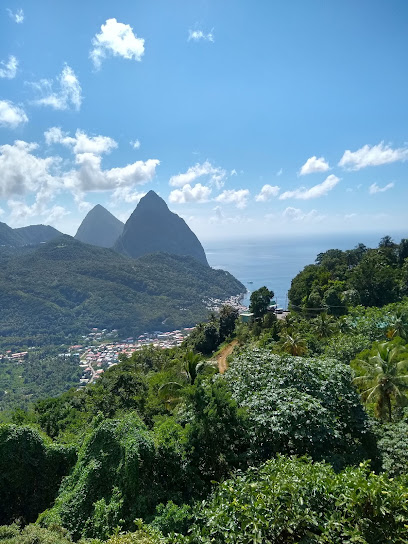
Soufrière Drive In Volcano
Explore the unique geothermal wonders of Soufrière Drive In Volcano, the Caribbean's only drive-in volcano, set in the stunning landscapes of St. Lucia.

Sugar Beach, a Viceroy Resort
Discover the luxury and beauty of Sugar Beach, a Viceroy Resort, nestled between the majestic Pitons in St. Lucia, ideal for relaxation and adventure.

Diamond Falls Botanical Gardens & Mineral Baths
Explore the natural beauty and therapeutic mineral baths at Diamond Falls Botanical Gardens, a top attraction in St. Lucia's lush landscapes.

St Lucia Sulphur Springs
Embark on a unique journey at St Lucia Sulphur Springs, the Caribbean's only drive-in volcano, where mud baths and hot springs await.

Toraille Waterfall villas and atv
Experience the beauty of Toraille Waterfall and the thrill of ATV adventures in the heart of St. Lucia's lush landscapes.
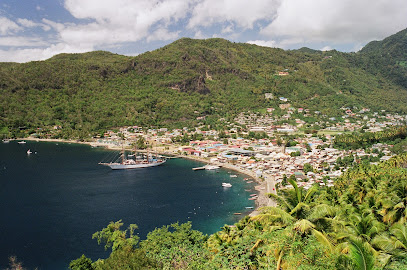
Saint Lucia National Trust
Explore the enchanting trails and rich heritage of the Saint Lucia National Trust, where history and nature unite in a breathtaking national park.

Tet Paul Nature Trail
Experience the natural beauty and cultural highlights of Saint Lucia at the Tet Paul Nature Trail, a breathtaking journey through lush landscapes and stunning views.

Ti Kaye Resort & Spa
Discover the luxurious tranquility of Ti Kaye Resort & Spa, a breathtaking retreat nestled along the pristine shores of Anse Cochon in St. Lucia.

Morne Coubaril Historical Adventure Park
Discover the vibrant culture and thrilling adventures at Morne Coubaril Historical Adventure Park in St. Lucia.
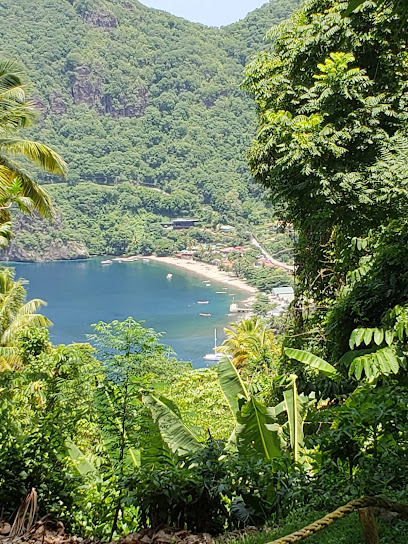
Fond Doux Eco Resort
Discover the tranquility of Fond Doux Eco Resort, an eco-friendly retreat in St. Lucia offering lush landscapes, organic dining, and cultural immersion.

Piton Falls
Experience the natural beauty and tranquility of Piton Falls, a stunning waterfall oasis in the heart of St. Lucia's lush rainforest.

Project Chocolat
Discover the enchanting world of chocolate at Project Chocolat, St. Lucia's premier destination for chocolate lovers and culinary exploration.

Essential places to dine
Orlando's Restaurant & Bar
Experience authentic Creole flavors at Orlando's Restaurant & Bar in Soufriere, St. Lucia - where every dish is crafted with local ingredients and passion.

Fedo's
Experience authentic St. Lucian cuisine at Fedo's in Palmiste - where local flavors come alive in every bite.

Petit Peak Restaurant
Discover exquisite Caribbean cuisine at Petit Peak Restaurant in Palmiste, St. Lucia - where every dish tells a story.

Island Chef
Discover authentic Caribbean flavors at Island Chef in Palmiste, St. Lucia - where every dish tells a story.

The Mango Tree
Experience exquisite Caribbean cuisine amidst breathtaking views at The Mango Tree in Soufriere.

Treetop Restaurant and Bar
Experience exquisite dining at Treetop Restaurant and Bar in Saint Lucia, where breathtaking views meet exceptional local cuisine.

Martha's Tables
Experience authentic Caribbean cuisine at Martha's Tables in Belle Vue, St. Lucia – where every dish tells a story.

Club Whispers | Restaurant & Bar
Discover authentic Caribbean cuisine at Club Whispers Restaurant & Bar in beautiful Soufriere, St. Lucia – where every meal is a celebration.

Sea View Creole Restaurant
Experience authentic St. Lucian cuisine with stunning views at Sea View Creole Restaurant in Palmiste.

Bamboo Restaurant
Experience authentic St. Lucian cuisine amidst lush tropical surroundings at Bamboo Restaurant in Fond Doux.

The Container Bar N Grill
Discover the vibrant essence of St. Lucian cuisine at The Container Bar N Grill - where every dish tells a story.

The View
Discover authentic St. Lucian flavors at The View, where breathtaking vistas meet delightful local cuisine in Anse Ivrogne.

Soley Kouche Restaurant
Experience authentic Caribbean flavors at Soley Kouche Restaurant in Delcer, St. Lucia - where every meal tells a story.

Rabot Restaurant
Experience authentic Caribbean flavors at Rabot Restaurant in St. Lucia – where family-friendly dining meets stunning natural beauty.

Brigands Hideaway
Experience the best of St. Lucian cuisine at Brigands Hideaway, where every meal is a celebration of local flavors amidst stunning natural beauty.

Markets, malls and hidden boutiques
Tobi's Shop
Discover the vibrant offerings of Tobi's Shop in Union Vale, St. Lucia - a local supermarket packed with fresh produce and unique island flavors.

Shop D' Caribbean
Discover the vibrant essence of St. Lucia at Shop D' Caribbean, your go-to store for authentic local crafts and products.
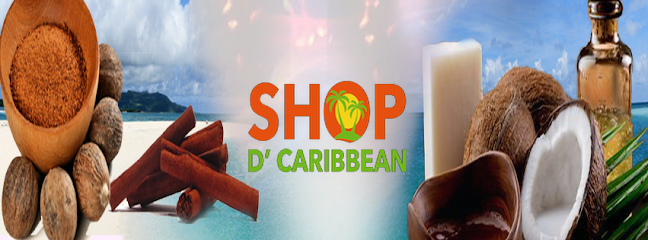
Unique Graphics
Explore Unique Graphics in St. Lucia – where creativity meets craftsmanship in vibrant custom signs.

Victorian Boutique
Explore Victorian Boutique in Belle Vue, St. Lucia—your gateway to unique shopping, local culture, and unforgettable treasures.

Taytave's Boutik
Discover unique Caribbean souvenirs and local crafts at Taytave's Boutik, the perfect gift shop in St. Lucia for every traveler.

Lifestyles
Explore Lifestyles in St. Lucia for unique clothing and accessories that embody the island's vibrant culture and style.
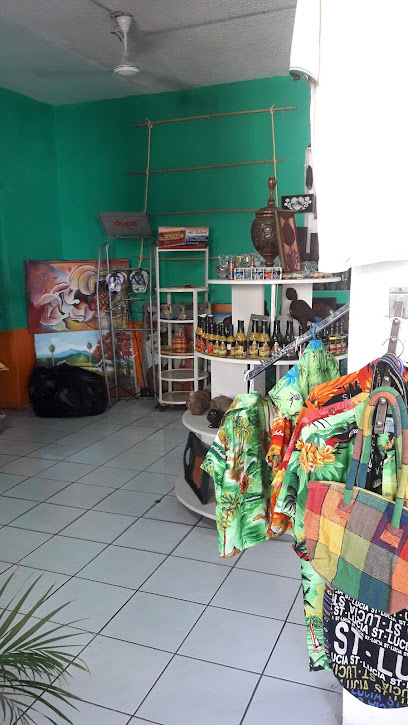
Divine Divas
Discover unique fashion and accessories at Divine Divas, the charming boutique in Palmiste, St. Lucia, showcasing vibrant Caribbean culture.

Carla's Souvenir & Gift Shop
Explore Carla's Souvenir & Gift Shop in Choiseul Plaza for authentic St. Lucia gifts and crafts that capture the island's vibrant culture.

Soufriere Sports Shop
Discover high-quality sportswear at Soufriere Sports Shop, the perfect stop for athletes and adventurers in beautiful St. Lucia.

Glamtique Fashion Slu
Discover the latest Caribbean fashion trends at Glamtique Fashion Slu, your go-to women's clothing store in St. Lucia.

Harry Edwards Jewelers
Explore the exquisite collection of Harry Edwards Jewelers in Sugar Beach, St. Lucia, where luxury meets local craftsmanship in a breathtaking setting.
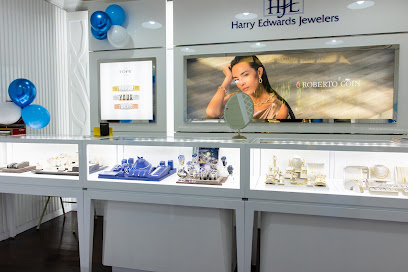
Jj's Designs & Boutique
Explore Jj's Designs & Boutique in St. Lucia for vibrant beachwear and unique souvenirs reflecting the island's culture and charm.

Impressions Boutique
Explore Impressions Boutique in Soufriere for a unique shopping experience that captures the essence of St. Lucian fashion and culture.

Dayzee Candle Co.
Explore the unique craftsmanship of Dayzee Candle Co. in St. Lucia, where every candle tells a story of local artistry and aromatic bliss.

Adéllee Bags
Discover unique and stylish handbags at Adéllee Bags in Reunion, St. Lucia – a treasure trove of local craftsmanship and vibrant Caribbean fashion.

Essential bars & hidden hideouts
Cool Joint
Discover the vibrant flavors of St. Lucia at Cool Joint, a grill and bar in Choiseul offering delicious local cuisine and refreshing drinks.

Bigger's Place
Experience the authentic Caribbean vibe at Bigger's Place, a cozy bar in Fond St Jacques, St. Lucia, offering local drinks and delicious cuisine.

Shackaville
Experience the best of St. Lucia at Shackaville, where delicious grilled cuisine meets a family-friendly atmosphere.

Cheaperz Bar
Discover the essence of Caribbean nightlife at Cheaperz Bar in Palmiste, St. Lucia, where vibrant music and refreshing drinks await.

The bamboo Bar
Experience the vibrant atmosphere of The Bamboo Bar in Belle Vue, a tropical oasis perfect for relaxation and enjoying local flavors.

Acquinas's Bar
Discover the vibrant Acquinas's Bar in Soufriere, St. Lucia, where refreshing drinks and lively atmosphere create unforgettable memories.

JaLousie Grill
Discover the vibrant flavors of St. Lucia at JaLousie Grill, a lively bar offering fresh local cuisine and stunning Caribbean views.

Cane Bar
Experience the vibrant nightlife at Cane Bar, where stunning views and expertly crafted cocktails create a tropical oasis in St. Lucia.

Genesis Entertainment Bar And Grill
Explore the vibrant nightlife of Soufriere at Genesis Entertainment Bar And Grill, where delicious food and refreshing drinks await.

Hush Bar Grill eats & tings
Discover the flavors of St. Lucia at Hush Bar Grill Eats & Tings, where every meal is a celebration of Caribbean culinary traditions.

Mari Bar
Discover the lively ambiance and refreshing drinks at Mari Bar in beautiful Anse Ivrogne, a must-visit for tourists in St. Lucia.

Bonté Restaurant
Experience the vibrant tropical vibes at Bonté Restaurant, a lively bar in Belle Vue, St. Lucia - perfect for cocktails and local brews.

Harmony's Bar
Discover the tropical allure of Harmony's Bar in Soufrière, St. Lucia, where refreshing cocktails meet breathtaking views and lively local culture.

On The Tiles
Experience the vibrant nightlife of St. Lucia at On The Tiles - a lively bar offering local drinks, great music, and a welcoming atmosphere.

M.A. Mitchell Steve Bar
Discover the heart of St. Lucia's nightlife at M.A. Mitchell Steve Bar, where refreshing drinks and local culture come together.

Local Phrases about Pitons
-
- HelloBonjou
[bon-jou] - GoodbyeOrevwa
[o-rev-wa] - YesWi
[wee] - NoNon
[non] - Please/You're welcomeTanpri
[tan-pree] - Thank youMèsi
[meh-see] - Excuse me/SorryEskize mwen
[es-kee-zay mwen] - How are you?Kijan ou ye?
[kee-jan oo yay] - Fine. And you?Byen. E ou menm?
[byen. ay oo menm] - Do you speak English?Eske ou pale angle?
[es-ke oo pal an-glay] - I don't understandMwen pa konprann
[mwen pa kon-pran]
- HelloBonjou
-
- I'd like to see the menu, pleaseMwen ta renmen wè meni a, tanpri
[mwen ta ren-men weh meh-nee ah, tan-pree] - I don't eat meatMwen pa manje vyann
[mwen pa manj vyan] - Cheers!Santé!
[san-tay] - I would like to pay, pleaseMwen ta renmen peye, tanpri
[mwen ta ren-men pay-yay, tan-pree]
- I'd like to see the menu, pleaseMwen ta renmen wè meni a, tanpri
-
- Help!Asistans!
[ah-sis-tans] - Go away!Alé!
[ah-leh] - Call the Police!Rele Lapolis!
[re-leh la-po-leece] - Call a doctor!Rele yon doktè!
[re-leh yohn dok-teh] - I'm lostMwen pedi
[mwen peh-dee] - I'm illMwen malad
[mwen ma-lad]
- Help!Asistans!
-
- I'd like to buy...Mwen ta renmen achte...
[mwen ta ren-men ach-tay] - I'm just lookingMwen jis gade
[mwen zhee gah-day] - How much is it?Konbyen sa koute?
[kon-byen sah koo-teh] - That's too expensiveSa twò chè
[sah twah sheh] - Can you lower the price?Ou kapab diminye pri a?
[oo ka-pab dee-min-yeh pree ah]
- I'd like to buy...Mwen ta renmen achte...
-
- What time is it?Ki lè li ye?
[kee leh lee yay] - It's one o'clockLi san yon
[lee sahn yohn] - Half past (10)Douzan
[doo-zahn] - MorningMaten
[ma-ten] - AfternoonApremidi
[ah-pre-mee-dee] - EveningSwè
[sweh] - YesterdayYe
[yeh] - TodayJodi a
[jo-dee ah] - TomorrowDemen
[deh-men] - 1Yon
[yohn] - 2De
[deh] - 3Twaz
[twaz] - 4Kat
[kaht] - 5Senk
[sank] - 6Sis
[sees] - 7Sèt
[set] - 8Wit
[weet] - 9Nèf
[nef] - 10Dis
[deece]
- What time is it?Ki lè li ye?
-
- Where's a/the...?Ki kote...?
[kee koh-teh] - What's the address?Kisa adrès la ye?
[kee-sah ad-res la yay] - Can you show me (on the map)?Ou kapab montre mwen (sou kat la)?
[oo ka-pab mon-tray mwen (soo kaht la)] - When's the next (bus)?Ki lè pwochen (bis) a ye?
[kee leh pwosh-en beess ah yay] - A ticket (to ....)Yon tikè (pou ....)
[yohn tee-keh (poo)]
- Where's a/the...?Ki kote...?
History of Pitons
-
The Pitons, Gros Piton and Petit Piton, are two volcanic spires located on the southwestern coast of Saint Lucia. These iconic twin peaks were formed millions of years ago during intense volcanic activity. Rising sharply from the Caribbean Sea, Gros Piton stands at 786 meters, while Petit Piton reaches 739 meters. This dramatic landscape is a result of volcanic lava solidifying and creating these steep mountains, offering a stunning natural spectacle that has enchanted visitors for centuries.
-
Before the arrival of Europeans, the area surrounding the Pitons was inhabited by the Arawak and later the Carib peoples. These indigenous groups lived off the land, fishing in the abundant coastal waters and farming the fertile volcanic soil. The Pitons held spiritual significance for these early inhabitants, featuring prominently in their myths and rituals.
-
The arrival of European explorers in the 16th century marked a significant turning point in the history of the Pitons. The French and British both vied for control over Saint Lucia, recognizing its strategic location and fertile lands. The Pitons served as natural landmarks for navigation and were often referenced in early colonial maps. During this period, the local Carib population faced displacement and decline due to disease and conflict.
-
Saint Lucia, including the Pitons area, was heavily influenced by French culture and governance during the 17th and 18th centuries. The French established sugar plantations, utilizing the fertile volcanic soil around the Pitons. The labor-intensive plantation economy relied on enslaved Africans, whose descendants form a significant part of Saint Lucia's population today. The French legacy is still evident in the island's language, cuisine, and place names.
-
After a series of conflicts between the French and British, Saint Lucia became a British colony in 1814 under the Treaty of Paris. The Pitons continued to serve as a prominent natural feature throughout this period. The British introduced new agricultural practices and infrastructure, reshaping the economic landscape of the island. However, the cultural impact of French colonization remained strong, creating a unique blend of influences.
-
In 2004, the Pitons Management Area was designated a UNESCO World Heritage Site. This recognition was due to the area's outstanding natural beauty and ecological significance. The site encompasses the Pitons, the surrounding coral reefs, and a unique tropical forest ecosystem. This designation has helped to preserve the natural environment and promote sustainable tourism, ensuring that the Pitons remain a cherished landmark for future generations.
-
The Pitons hold a special place in the hearts of Saint Lucians. They are featured on the national flag and are a source of pride and identity for the island's inhabitants. The surrounding communities have maintained traditional practices, including fishing, farming, and craftsmanship, which contribute to the rich cultural tapestry of the region. Festivals and celebrations often highlight the Pitons as a symbol of natural beauty and resilience.
Pitons Essentials
-
Saint Lucia is accessible via the Hewanorra International Airport (UVF) in Vieux Fort and the George F. L. Charles Airport (SLU) in Castries. Hewanorra International Airport is the main gateway for international flights, including those from North America and Europe. From the airport, you can take a taxi or rent a car to reach the Pitons, which are approximately an hour and a half drive away. There are also shuttle services available that can be pre-booked.
-
Getting around in the Pitons area can be done using taxis, rental cars, or local buses. Taxis are a convenient option and are readily available, but it's advisable to agree on a fare before starting your journey. Renting a car provides flexibility, especially if you plan to explore the island extensively. Local buses are the most economical option but can be crowded and less frequent. Guided tours are another popular choice for visiting specific sites in and around the Pitons.
-
The official currency in Saint Lucia is the Eastern Caribbean Dollar (XCD). US dollars are widely accepted, and major credit cards are accepted in hotels, restaurants, and larger shops. However, it's advisable to carry some cash, especially for smaller vendors and in rural areas. ATMs are available in Soufrière and other major towns, but it’s wise to withdraw sufficient cash before heading to more remote areas.
-
Saint Lucia is generally a safe destination for tourists, but it is important to exercise standard precautions. Avoid walking alone at night in secluded areas and be cautious with your belongings in crowded places. While the Pitons area itself is relatively safe, some neighborhoods in Castries and other urban areas have higher crime rates, particularly petty theft and scams targeting tourists. Always stay vigilant and aware of your surroundings.
-
In case of an emergency, dial 911 for police, fire, or medical assistance. The nearest hospital to the Pitons is the St. Jude Hospital in Vieux Fort, which is about an hour's drive away. It is recommended to have travel insurance that includes medical coverage. For minor health issues, there are pharmacies in Soufrière where you can purchase over-the-counter medications. Always keep emergency contact numbers handy and inform your accommodation of your plans.
-
Fashion: Do dress comfortably and modestly, especially when visiting religious sites or local communities. Avoid overly revealing clothing. Religion: Do respect local customs and traditions. Always dress modestly and cover your head when entering churches. Public Transport: Do be respectful and courteous to drivers and other passengers. Don’t eat or drink on public transportation. Greetings: Do greet people with a warm 'hello' or 'good day.' A handshake is also common. Eating & Drinking: Do try local delicacies and accept food offerings graciously. Don’t refuse hospitality, as it is considered impolite.
-
To experience the Pitons like a local, visit the Soufrière market where you can buy fresh produce and local crafts. Engage with locals, who are generally friendly and willing to share stories about their culture and history. Don’t miss the opportunity to hike Gros Piton or Petit Piton for breathtaking views. Also, try the local cuisine, including dishes like green figs and saltfish. Visiting the Sulphur Springs, the world's only drive-in volcano, offers a unique experience.
Trending Landmarks in Pitons
-
Sandals Grande St. Lucian
-
Royalton Saint Lucia, An Autograph Collection All-Inclusive Resort
-
Pointe Seraphine Cruise Port
-
Soufrière Drive In Volcano
-
Sugar Beach, a Viceroy Resort
-
Diamond Falls Botanical Gardens & Mineral Baths
-
St Lucia Sulphur Springs
-
Toraille Waterfall villas and atv
-
Saint Lucia National Trust
-
Tet Paul Nature Trail
-
Ti Kaye Resort & Spa
-
Morne Coubaril Historical Adventure Park
-
Fond Doux Eco Resort
-
Piton Falls
-
Project Chocolat











